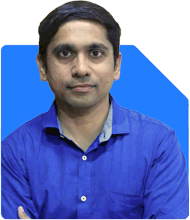Dear Sir, I request you to guide me on below MFs investment for long term (25yrs):
1. Large Cap
1.1 Nippon India Large Cap
1.2 ICICI Prudential Bluechip.
2. Mid Cap
2.1 Quant Mid Cap Fund
2.2 HDFC Mid Cap Opportunities.
3. Small Cap
3.1 Quant Small Cap
3.2 Nippon India Small Cap.
4. Multi Cap
4.1 Quant Active Fund
4.2 Nippon India Multi Cap.
5. Flexi Cap
5.1 Quant Flexi Cap
5.2 Parag Parikh Flexi Cap.
Planning to invest between 3K to 5K on monthly basis in one fund from each category. Kindly let me know if you have any better MFs in which I can invest. You're guidance will be much helpful for building a long term wealth.
Thank you in advance.
Ans: You’ve done well in considering a diverse range of mutual funds for long-term wealth creation. Investing regularly over 25 years can indeed help you build significant wealth. However, let's take a closer look at your chosen funds and explore how to maximize your returns while managing risks.
Concerns with Index and Direct Funds
First, it's important to understand some potential issues with the funds you’ve chosen:
Disadvantages of Index Funds: Index funds simply track an index and do not offer any active management. In times of market volatility, they may underperform. Actively managed funds, on the other hand, have the flexibility to adapt and potentially outperform the market.
Direct vs. Regular Plans: Direct plans of mutual funds have lower expense ratios, but they lack the personalized advice and financial planning that comes with investing through a Certified Financial Planner (CFP). Regular plans, invested through a CFP, provide ongoing guidance, which can be invaluable over a 25-year investment horizon.
Large-Cap Fund Selection
Large-cap funds offer stability with moderate growth potential. Your choice of funds like Nippon India Large Cap and ICICI Prudential Bluechip is good, but let’s consider some alternatives:
Actively Managed Funds: Instead of passive large-cap funds, you might consider actively managed large-cap funds. These funds have the potential to outperform the index, offering better long-term returns.
Fund Manager Expertise: A skilled fund manager can make informed decisions that benefit the fund during different market cycles. This is crucial for long-term growth.
Mid-Cap Fund Selection
Mid-cap funds can offer higher returns, but they come with higher risks. Your choices of Quant Mid Cap Fund and HDFC Mid Cap Opportunities are interesting, but let's ensure your portfolio is balanced:
Active Management: Mid-cap stocks can be volatile. An actively managed mid-cap fund allows the fund manager to pick stocks with strong growth potential, reducing the risk of poor performers dragging down the fund.
Diversification: Ensure that the mid-cap fund you choose is well-diversified. This helps spread the risk across multiple sectors and companies.
Small-Cap Fund Selection
Small-cap funds are known for their high growth potential, but they also carry significant risks. The funds you’ve selected, like Quant Small Cap and Nippon India Small Cap, need careful consideration:
Higher Volatility: Small-cap funds can be highly volatile. While they offer high returns, the risk of loss is also high. Consider this carefully, especially since you’re planning a long-term investment.
Expert Guidance: It’s crucial to have a CFP guide you when investing in small-cap funds. Their expertise can help you navigate the ups and downs of this category.
Multi-Cap Fund Selection
Multi-cap funds invest across different market capitalizations, providing a balanced mix of large-cap, mid-cap, and small-cap stocks. Your choices of Quant Active Fund and Nippon India Multi Cap Fund are on the right track:
Balanced Exposure: Multi-cap funds offer diversified exposure across market caps. This can help reduce risk while providing growth opportunities.
Active Management: Opt for actively managed multi-cap funds where the fund manager can adjust the allocation based on market conditions, potentially boosting returns.
Flexi-Cap Fund Selection
Flexi-cap funds offer flexibility in investing across market capitalizations without any predefined limits. The funds you’ve chosen, like Quant Flexi Cap and Parag Parikh Flexi Cap, are worth considering, but with some insights:
Flexibility Advantage: Flexi-cap funds allow fund managers to allocate assets across large, mid, and small caps as per market opportunities. This flexibility can be beneficial in changing market conditions.
Managerial Expertise: Ensure that the flexi-cap fund you choose has a strong track record and is managed by a skilled fund manager. This can make a significant difference in long-term performance.
Suggested Portfolio Allocation
Considering your goal of long-term wealth creation and your risk tolerance, here’s a suggested allocation strategy:
Large-Cap Fund (Actively Managed): Allocate Rs. 3,000 to Rs. 5,000 monthly. This provides a stable foundation with moderate growth potential.
Mid-Cap Fund (Actively Managed): Allocate Rs. 3,000 to Rs. 5,000 monthly. This offers higher returns with some risk.
Small-Cap Fund (Actively Managed): Allocate Rs. 3,000 to Rs. 5,000 monthly. This is higher risk but can contribute significantly to your portfolio’s growth.
Multi-Cap Fund (Actively Managed): Allocate Rs. 3,000 to Rs. 5,000 monthly. This offers diversified exposure and balances risk across different market caps.
Flexi-Cap Fund (Actively Managed): Allocate Rs. 3,000 to Rs. 5,000 monthly. This provides flexibility and potential for optimized returns.
Regular Monitoring and Rebalancing
Investing over 25 years requires regular monitoring and rebalancing to ensure your portfolio remains aligned with your goals:
Annual Review: Conduct an annual review of your portfolio. Assess the performance of each fund and consult with your CFP to make any necessary adjustments.
Market Conditions: Stay informed about market conditions. Your CFP can guide you on whether to stay the course or make changes to your portfolio.
Life Changes: As life changes, so should your investment strategy. A CFP can help you adjust your investments based on major life events like marriage, buying a home, or planning for your child’s education.
Final Insights
Your commitment to long-term wealth creation is commendable. However, fine-tuning your investment strategy can help you achieve better results:
Focus on Active Management: Replace index and direct funds with actively managed funds. This can enhance your portfolio’s performance over the long term.
Work with a CFP: Regular investments through a CFP ensure that you have a partner in your financial journey, optimizing returns while managing risks.
Diversify Wisely: Ensure your portfolio is well-diversified across different market caps and sectors. This helps balance risk and return.
Stay Engaged: Regularly review and adjust your portfolio. Staying engaged with your investments is key to long-term success.
Investing is a marathon, not a sprint. With the right strategy and expert guidance, you can build a solid financial future for yourself and your loved ones.
Best Regards,
K. Ramalingam, MBA, CFP
Chief Financial Planner
www.holisticinvestment.in
























